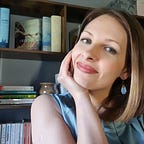Quantum Therapy
I have always been fascinated by quantum physics — probably because it challenges all conventional laws of reality and questions our rational ways of thinking, (and I am not the one who likes to follow all the rules).
This is a relatively new discipline, dating back to only 1900. Quantum level is the smallest unit of mater detected in the universe so far, and huge solenoid magnets are used to measure those quantum particles. However, observations of hectic behaviour of quantum particles provide more questions than answers, and due to lack of scientific proof, most of the quantum physics research is only hypothetical thought experiments — which in fact, is what therapy is all about — finding all possible „what if’’ scenarios to get you out of your usual thinking box.
My favourite theory is called ‘quantum suicide’, conceptualised by Hans Moravec in 1987, and then later independently by Bruno Marchal. This is the ultimate culmination of thought process that evolved from Niels Bohr’s Copenhagen interpretation and Everett’s many-worlds theory — you can look it up here.
But what does it got to do with therapy?
While most of the scientific research is based on some sort of observation, it is now well known in science that the very process of observation unavoidably influences the process that is being observed — that is, the behaviour of the smallest particles (quanta) is forced to take certain direction just because it is being observed.
So if we only can know what we have observed and measured, but our observation influences the very process itself, how do we know what the process would look like without any interference?
This unavoidable human tendency to influence the velocity of small particles is called Heisenberg’s Uncertainty Principle and is driving scientists mad because it means that there are ‘unknown unknowns’ in the world that we have no way yet to measure.
This then leads onto a hypothetical situation that if the process is unobserved, particles will exist in all possible states at once in a coherent superposition, creating the existence of Multiverse — an infinite number of parallel coexisting universes. So as quantum suicide theory goes, when the man pointing a revolver at his head pulls the trigger, the universe is split into two — one with him still being alive, and another one dead. And then one that is alive pulls the trigger again, the same process happens again and again, meaning that in some parallel universe there will always be an alive person — this is called quantum immortality.
If our life and existence itself is just a form of energy, that means we are only experiencing one stream of energy — one that we observe.
Where focus goes, energy flows — is one of the most commonly used sayings in NLP. Just imagine the power of thought that with every possible decision we make, your existence is split into two. This process of creating a parallel universe is invisible to us because we have decided to put our conscious focus on the one we call reality. It is just because of the limits of the physical world that we are only able to witness the one that we are observing right now. But what if our minds and consciousness are not subject to any Newtonian laws of the material world?
Over century-long debate of whether light is a wave or is it made of separate particles, always shown that it can be either or — depending on observation. But just recently scientist devised some ways to measure particles that prove that energy can have dual existence when unobserved (which is true for electrons and other sub-atomic particles), behaving both as waves and particles simultaneously, resulting in nonlocality — notion that particles can be at different locations at once. And if all the world is made up of those small particles, can those rules also apply to the bigger objects? Of course, there isn’t any scientific proof for the existence of parallel universes, but there is no way to disprove it either. (In fact, some of the most intelligent people in this world are advocates of multiverse theory — e.g. prof. Stephen Hawkings).
So when you are sat in my therapy room, pondering on some unwanted consequences of your previous action, how differently do you feel right now, knowing that all the other possible outcomes are also out there, coexisting in parallel consciousness, patiently waiting for your shift in the observation in order to be found?
